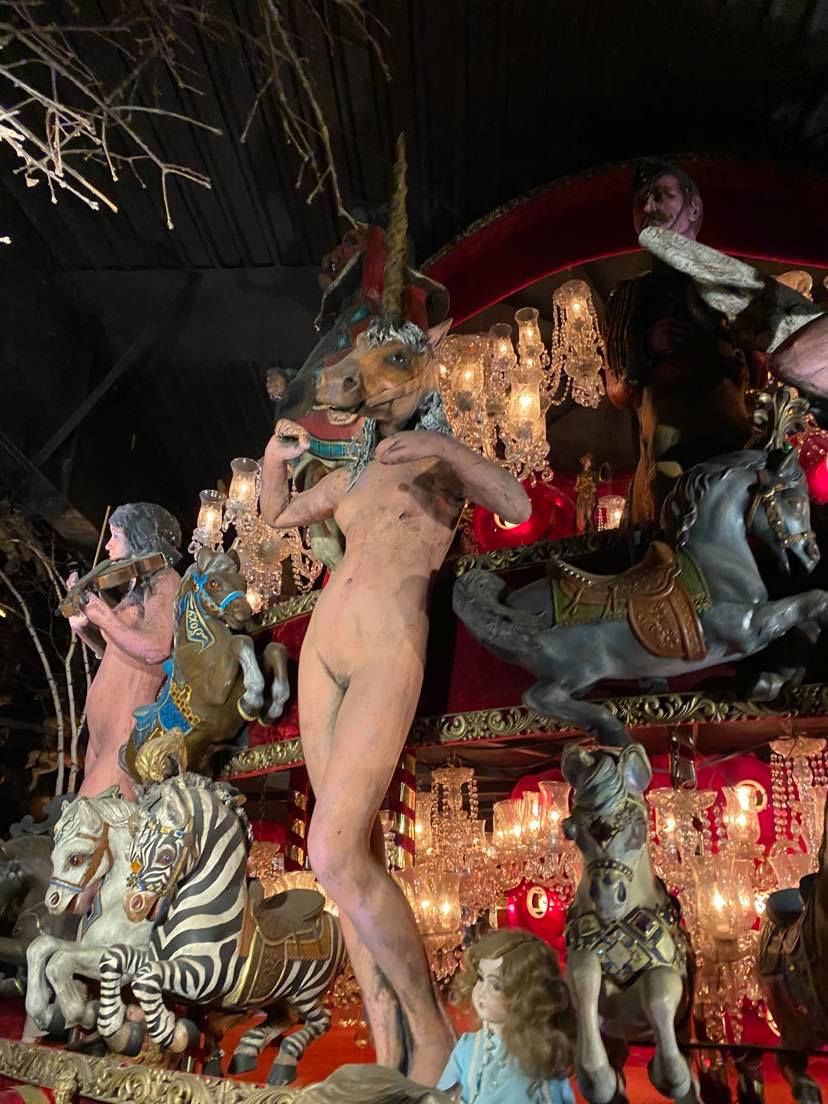- Ben Hellman

- Sep 23, 2023

A medieval miniature of Alexander the Great being lowered into the sea in a bathysphere, from Le Livre et le vraye hystoire du bon roy Alixandre, ca. 1420, f. 77v (Wikimedia). The bathysphere is curiously shaped like Reza Baluchi’s “hamster wheel.”
Mythological hubris and its attendant risks and rewards are increasingly beyond the common man’s reach even as the wealthy capitalize on daring, foolhardy adventure. Hubris is defined as excessive pride or confidence. What I call mythological hubris, or classical hubris, is the same, but it incorporates the desire to overcome a sphere that is by nature off limits to human beings. Today in the United States a number of the ultra-wealthy seem to see no natural limits, and without government controls, like the tragic heroes of yore, they have only the natural consequences of their actions to face. This is not so for the average person.

Reza Baluchi and one of his water craft by Jim Rassol from the Florida Sun Sentinel.
Take the example of Reza Baluchi, the extreme athlete and eccentric inventor who seems intent on imperishable fame whether or not it amounts to his death. In August, the US Coast Guard stopped Baluchi from a trans-Atlantic crossing in what authorities have described as a “hamster wheel” held afloat by buoys in a metal frame. The Coast Guard officers saw a man in danger, but the power they wielded to save him was the bureaucratic power of the modern state: Baluchi’s craft was not registered.

The Fall of Icarus, alternate title: Daedalus Icaro alta nimis ambienti orbatur. Etching appeared in: The Metamorphoses of Ovid, plate 75, second edition illustrated by Antonio Tempesta, published 1606.
It’s hard to imagine such a thing happening to Daedalus, who strapped on wings of his own invention and conquered the sky. Of course there was no modern bureaucratic state, no FAA to report him to, as airline pilots reported kindred-spirit Larry Walters, the man who in 1982 rose to 16,000 feet in a lawn chair attached to a multitude of weather balloons. Like Walters, who later took his life, Baluchi seems like a troubled man. Faced with being stopped from running 4,000 miles across the Atlantic Ocean to London, England, Baluchi threatened to harm himself with a knife and to blow himself up with wires he claimed were attached to a bomb. It was Baluchi’s fifth attempt to make a major ocean crossing in a similar, self-made craft. In 2016 the Coast Guard shot and scuttled his vessel, sending it to the bottom of the ocean. Baluchi’s friend said that Baluchi had invested more than $120,000 into the craft.

Larry Walters in his lawn chair from the Smithsonian Magazine.
Perhaps if Baluchi had the money and clout to charge a small group of wealthy passengers $250,000 a spot to join him on his perilous mission, like the doomed entrepreneur Stockton Rush, he would have been allowed to run as far as his legs could take him. The cost of legally facing life-threatening danger that allows people to travel to spaces unfit for our survival has become the rich man’s game. Rush’s cofounder Guillermo Söhnlein recently announced his desire to build a colony in the hellish atmosphere of the planet Venus. Elon Musk has garnered attention with his plans to reach the planet Mars. These modern-day Nimrods will commission others to die building their Towers of Babel and chances are, they will find a way around zoning restrictions.

The Tower of Babel by Pieter Bruegel the Elder, 1563, from Wikipedia. Extra-biblical traditions name Nimrod as the ruler who commissions the Tower of Babel.
Our modern bureaucracy may stand in the way of ordinary mortals seeking fame or death, but it isn’t against using mythological wonder to inspire us to support expensive ventures with our tax dollars. NASA has long used the cache of myth to inspire Americans, by naming missions after Greek gods and heroes. The Artemis Program to return Americans to the moon is only the latest example of this. NASA’s advertising department created colorful cell phone and desktop backgrounds for Artemis in an attempt to excite the public imagination. The Smithsonion’s Air and Space Museum isn’t above celebrating Walters’s illegal flight by displaying his lawn chair. Give the government some time and it might look back more charitably on Baluchi’s hamster wheel.

Larry Walters's lawn chair, from the Smithsonian's National Air and Space Museum.
We all presumably have the mythological wonder to appreciate the dreams that inspire men like Baluchi and Walters. It is not hard for me to understand what drove Baluchi to brave the laws of man and nature to make five different attempts at crossing the ocean in a self-built, self-propelled bubble-wheel. It isn’t hard for me to understand Walters, who reportedly said “It was something I had to do. I had this dream for twenty years, and if I hadn't done it, I think I would have ended up in the funny farm.” Nothing separates these intrepid, slightly mad adventurers from the rest of us, but the will to carry out their dreams, no matter the cost. And nothing separates them from the men who take those risks without fear of government interference, but a few cool billions.















